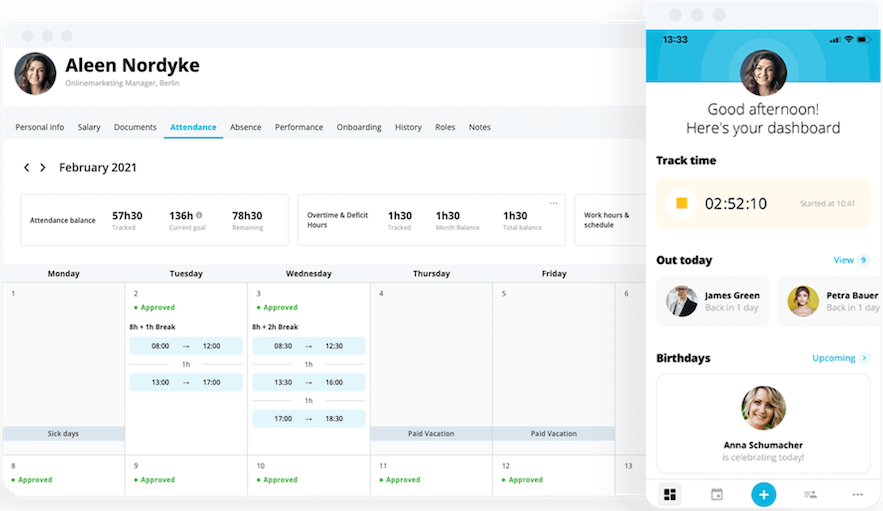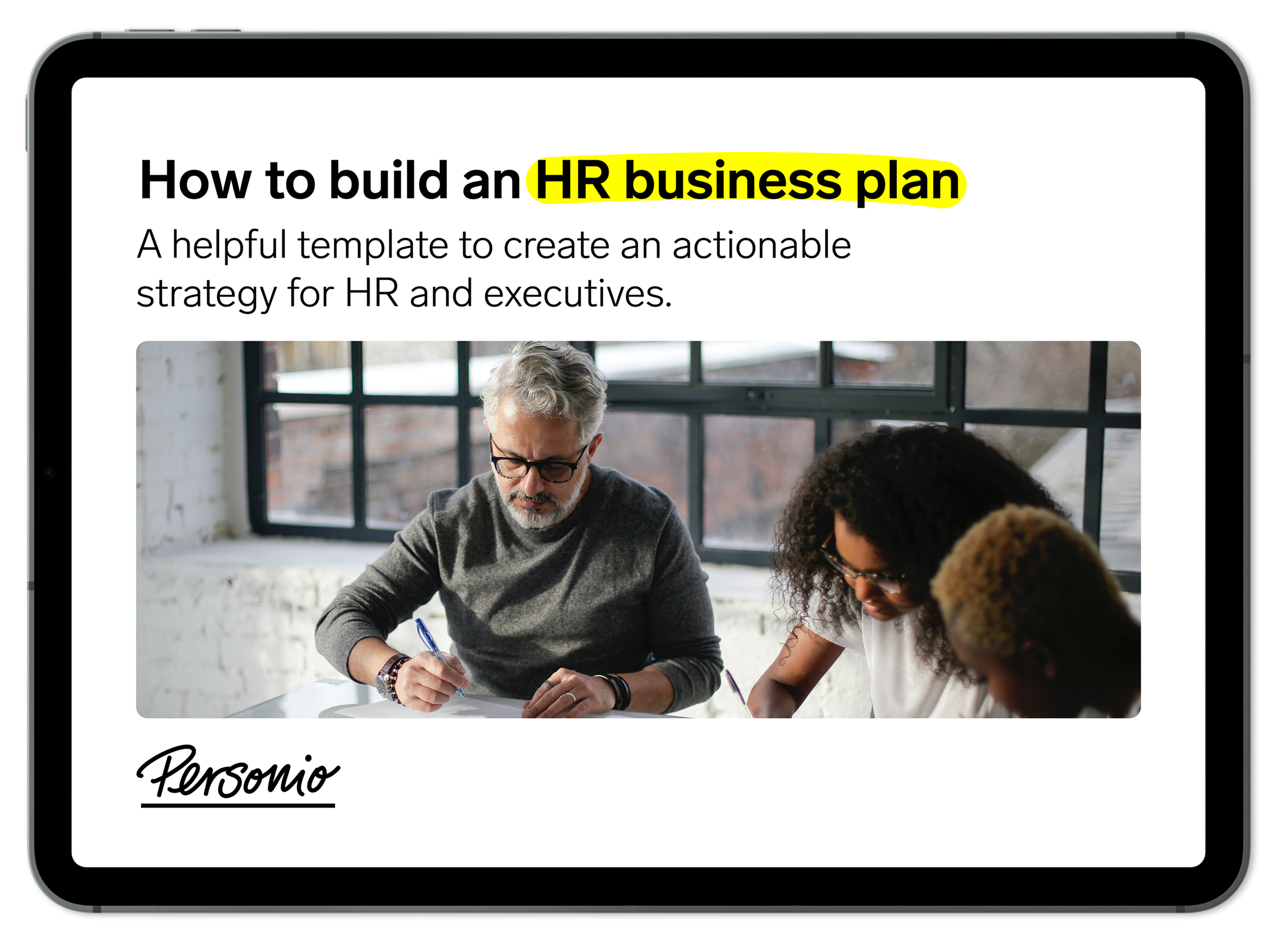
HR Business Plan Template
Unlock executive buy-in with our HR business plan template.
Get the templateStrategic Human Resources Management: 6 Key Steps & Tips

Strategic human resource management is the key to one of the main goals for just about any organization’s HR or People Team: Becoming aligned with, closer to, and having a direct influence on a business’s goals and performance. The big question is, though: How do you forge that link?
Build your very own HR business plan with the help of our template. Download it now.Contents
- 1What is strategic human resource management (SHRM)?
- 2Is there a difference between HRM and strategic HRM?
- 3The key benefits of strategic human resource management
- 4How Do You Implement SHRM?
- 5Which HR programmes should you start focusing on?
- 6Are there limits to SHRM?
- 7Implementing strategic HRM with Personio
- 8Frequently asked questions
What is strategic human resource management (SHRM)?
Strategic human resource management, often coined as SHRM or even referred to as ‘People Strategy,’ is the framework an HR puts forth to attract, manage, develop and retain employees to meet an organisation’s long-term business goals. Essentially, SHRM views and positions HR as a strategic partner and supporter of any business.
A huge part of this is often referred to as strategic human resources planning. Think of it as akin to workforce planning, except where specifically an HR team sits down and hashes out what they need, and what targets they need to hit, with the resources they have, to match the business’ ultimate goals.
In short, strategic human resource management typically exerts influence on:
Employer branding, talent attraction, and hiring plans
Day-to-day management and employee data changes
Performance cycles as well as learning and development (L&D) programs
Retention measures, employee benefits, and fringe benefits
Organisational culture and change management processes
And more…
There is no single way to look at SHRM. Instead, it’s really about positioning an HR team as having a distinct influence over a business’s long-term success. Further to that, planning and allocating resources to exert that influence in the best ways possible.
The goals of strategic HRM
What are some of the goals when it comes to strategic human resource management? Here are some of the top ones your organisation may want to keep an eye on:
HR management - The first goal of great SHRM is to have your HR management completely covered. That means having a system that runs all of your HR work and processes, while also involving your employees to get things done.
Talent management - Speaking of your employees, a truly strategic function is going to make their engagement and satisfaction a priority. That's because more engaged employees are more productive and more likely to stick around long term.
Leadership development - Your managers are multipliers for your organisation. SHRM allows HR teams to focus on the development of your leaders and line managers, giving them the necessary skills to lead your workforce with confidence.
Organisational performance - Overall performance, typically buoyed by having lots of great data on hand, is a huge piece of the puzzle for SHRM to thrive. Teams that have this can report on top-down organisational performance with ease.
Strategic presence - If your organisation is truly embracing SHRM, then your HR function should have the ability to maintain a strategic presence in a lot of the big decisions bubbling around the business. HR should be in the driver's seat.
Is there a difference between HRM and strategic HRM?
The difference between HRM and strategic HRM is the difference between an HR function being reactive or proactive in an organisations. In the case of HRM, an HR team is simply trying to keep pace with organisational changes and updates.
On the other hand, strategic HRM is a much more proactive affair. Additionally, SHRM almost guarantees a spot at the table of senior leadership, as well as a voice, for HR and for the development of an organisation’s people.

The key benefits of strategic human resource management
A business and organisation that embraces strategic human resource management is gaining access to some amazing benefits. The key ones include:
Future-proof planning – Embracing SHRM means staying on top of all your planning needs in line with your business. That means keeping an eye on where things are going, planning around them, and negating any nasty surprises that may come up along the way.
An improved corporate culture – Empowering your HR function can have a host of trickle-down effects, one of which is an improved corporate culture. It shows that your organisation is serious about its people and can promote a culture of transparency, feedback, and employee wellness.
A boost to employee performance – When HR is afforded a seat at the table, they can implement ways to make performance reviews, cycles, and learning and development opportunities (like development budgets per employee) more accessible, effective and sustainable. Everyone gets better at what they do!
Higher retention rates – Employees who feel like they are the centrepiece of their organisation are more likely to stick around. SHRM allows your HR function to focus on its people, and to create programs attuned to their current and future needs. That way, you keep your highest performers happy.
Effective resource management – When you let HR in on resource planning for your organisation, it creates a more nuanced and effective planning process. HR is able to plan with what your organisation has, what you need and how your people can get you there. Saving time, money, and improving results.
Stronger employer brand – A culture focused on its people will become better at attracting people. Especially in a time when talent is in high demand, you want to make sure that your current employees are your greatest ambassadors. SHRM can help boost your employer brand.
Future-proof your HR work

Make every HR process seamless with Personio’s HR management system, trusted by 10,000+ companies.
Learn more todayHow Do You Implement SHRM?
If you’re an organisation looking to implement strategic human resource management, first you need to make the case to management that you belong at the table.
This can be done through data, through persuasion or simply by understanding what it’s costing organisations doing nothing about it.
Next, there are some steps an HR department can take to really get things going:
1. Understand the business and vision
Your HR team needs an incredibly clear picture of where the business wants to go and the overall vision guiding that plan.
2. Identify key markers and KPIs
Boosting data literacy across your HR function is imperative for SHRM to get off the ground. Identify which data matters and educate your team on why.
3. Assess your org (HR and overall)
Strategic human resource management is kind of like a doctor-patient relationship. Assess the health and wellness of both your HR function and your org more generally.
Enable Data-Led Decisions
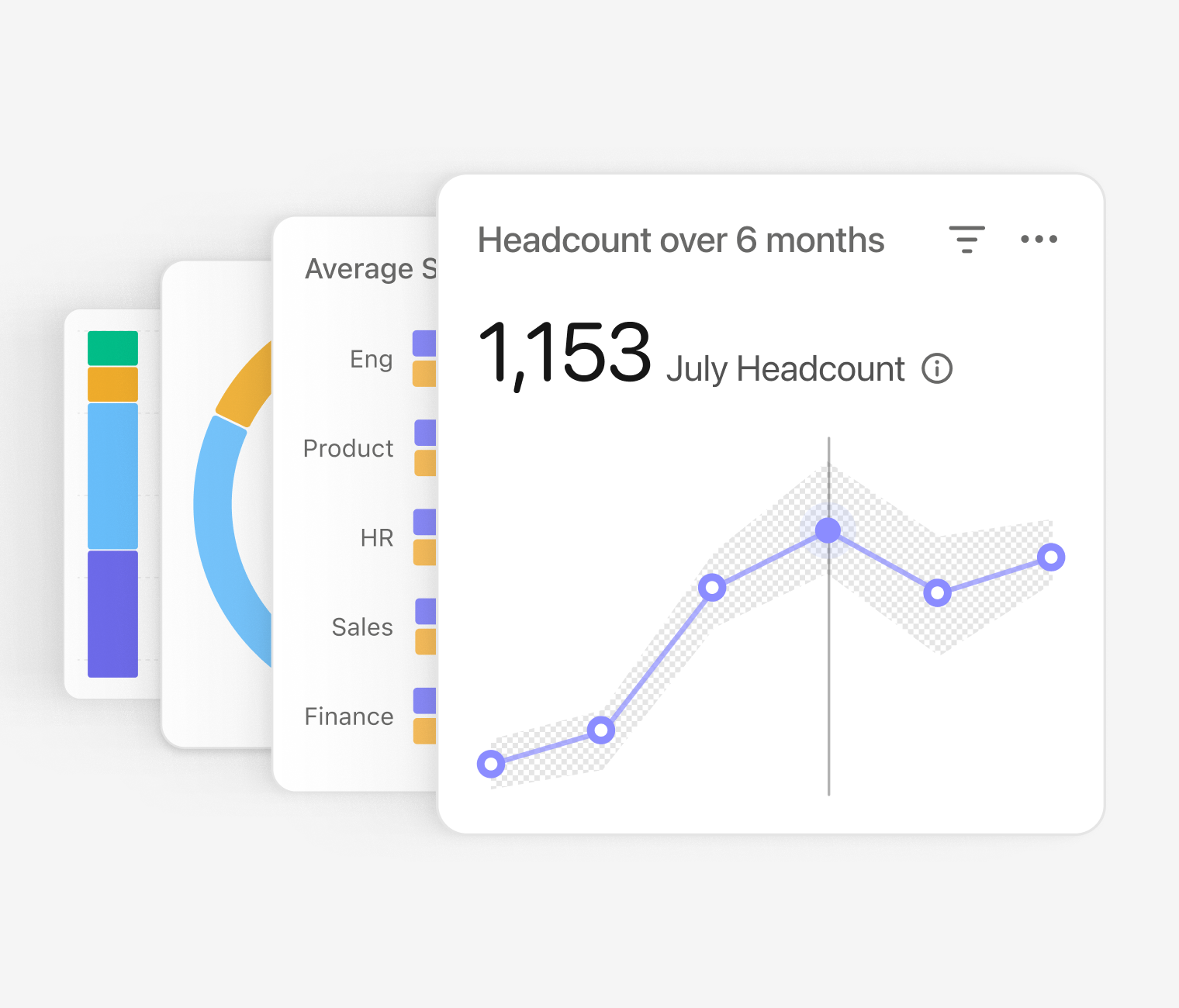
Collect and organise important HR insights such as absences, attrition, and more. Generate detailed reports in seconds so you can strategise with confidence.
Unlock detailed HR analytics4. Estimate needs against resources
What do you have on hand and what will you need in the future? Amazing SHRM relies on looking into that ‘crystal ball,’ so start looking ahead!
5. Take a long look at your applications
Which applications are you using to manage your people processes, and are employees satisfied? Think about how to combine the tools you use to make life easier.
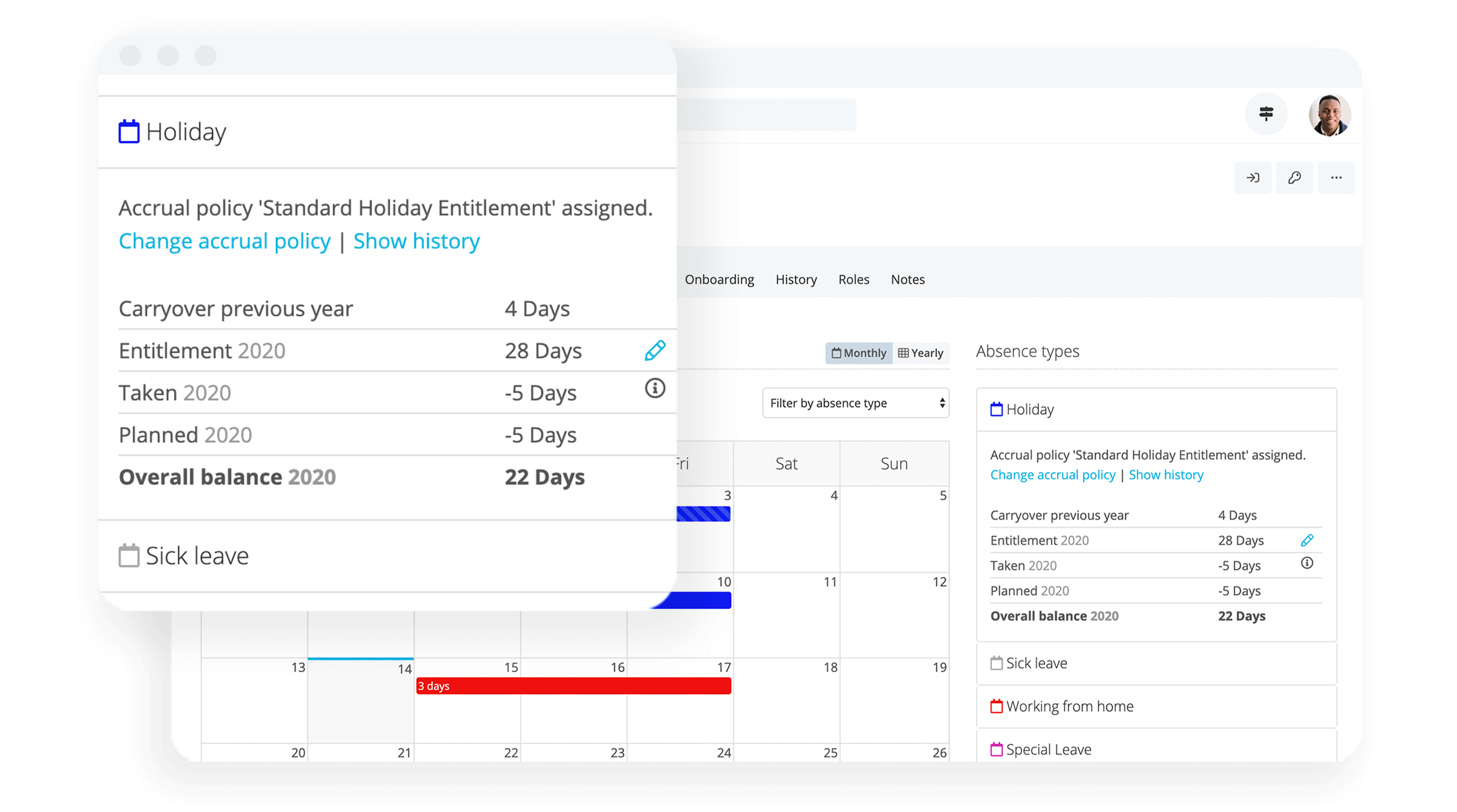
6. Evaluate, learn and iterate
SHRM is not a one-time process. Much like any business, it takes time and it takes multiple bites at the apple. An HR function that is constantly trying and learning is what you need.
A truly tangible place to start is by working within your HR function, and business overall, to craft a people strategy. It can serve as your roadmap to making SHRM a reality.
Which HR programmes should you start focusing on?
Strategic human resource management will typically flounder without focus. If you have a people strategy to guide you, that’s a start, but you may also need to think about specific initiatives and programs that you want to undertake to make it a reality.
Many organiations will begin with their recruitment strategy, which is where SHRM can shine by focusing on:
Resources and hiring plans
Selection and sourcing processes
Interview structure and candidate experience
Potential automation in the process
Time-to-hire and other recruiting KPIs
This is just the beginning, other areas of focus for many HR teams may also include:
Onboarding – Where an HR function can focus on how an employee gets started at work, how productive they are from day one, and how connected they feel to a company’s culture.
L&D – Introducing programs that help match skill gaps in an organisation, or focus on developing leaders in an organisation that is scaling quickly.
Policies – Thinking about ways to strategically add, edit, or remove policies and how to introduce them to the organisation on a wider scale (hybrid work, for instance).
Are there limits to SHRM?
The drawback of SHRM is often defined as the time it takes to get these initiatives off the ground, and how HR teams are often hounded with a thousand other smaller tasks that keep them from focusing on aligning their goals with the overall business strategy.
While that might be true, it is not an unsolvable equation. If HR teams can gain time back to focus on strategic topics, and even rethink the way they structure their department or org design in general, they can unlock the time they need back to focus on strategic HR.
One of the ways to do this is through an HR software. One that can save time, manage data securely, and even automate people processes across the business. This not only saves time but allows HR to rise up alongside the business, due to increased visibility and responsibility.
And, ultimately, that paves the way for making SHRM not only a possibility but an inevitability for ambitious HR teams who see their role as being at the table of senior leadership.
Implementing strategic HRM with Personio
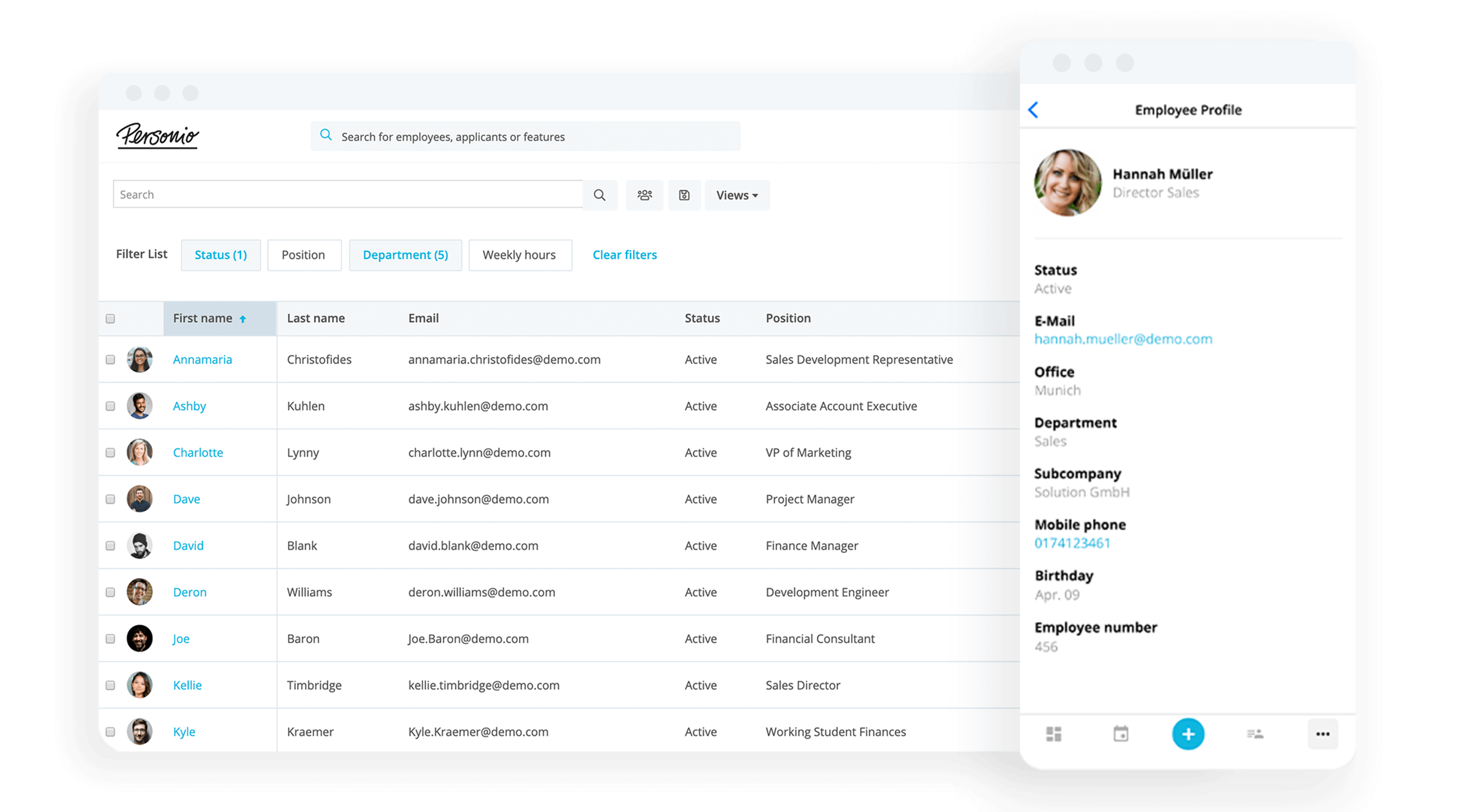
Personio helps lay the foundation for SHRM to thrive. If your organisation is looking for new ways to elevate your people and unlock their potential, then what you need most is time to focus on those initiatives. Our HR software can help.
Using Personio, you can automate critical HR processes, optimise them for your unique organisation and gain back time to focus on your people. Centralised data that is secure, customisable and as part of an overall HR ecosystem.
To help achieve your SHRM goals, some of the things unique to Personio include:
Supporting your talent. From the moment they sign, you can turn an applicant into an employee and treat them to a smoother onboarding process with Personio.
Rating performance. Use Personio to build our performance reviews and salary reviews that help establish a baseline for what great looks like at your organisation.
Reporting and key metrics. Access a wealth of insights as part of Personio's Reporting and Analytics function. Craft reports at the click of a button.
There's even more that we'd love to tell you about. You can learn more about Personio by chatting with one of our friendly experts today.
Frequently asked questions
What drives strategic human resource management?
Put simply, people drive SHRM in so many ways. That’s because, as businesses recognise that people are their greatest asset, they begin to understand the additional need that people need to be satisfied in their roles and their organisation to produce their best work.
So, the guiding principle of strategic human resource management is simple: keep your employees happy and watch your business flourish. And, as part of that equation, HR needs a spot at the table as the department most often tasked with managing and developing people.
That said, SHRM is a bit of a paradigm shift. In times past, business planning or goals may have influenced individual HR strategies that take place in an organisation. Think of something like a push to hire a specific role or introducing a private insurance plan for employees.
While this is one way of doing things, it’s more that business strategy drove or wholly defined HR strategies. SHRM shifts things by suggesting that there needs to be two concurrent strategies: a business strategy and an HR strategy, aligned with one another and with strategies dictated by each.
What’s the link between SHRM and workforce planning?
To the above point, the relationship between SHRM and workforce planning is that the latter is often concerned with putting the plan into place. Matching the future needs of the organisation with current resources, whereas SHRM takes a step back and understands where that process comes from, the demands on that process, and how it ultimately satisfies the workforce (rather than simply changing it).
What role does analytics play in SHRM?
Access to HR analytics, across your entire workforce, is an essential pillar of strategic human resource management. It affords HR teams the data they need to derive real insights to make decisions that power the business. It is a key reason why people analytics has become such a critical topic in recent years.
